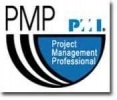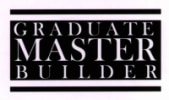GREEN BUILDING (is not)
Being active in “green” high-performance building design, construction, and education, we are most frequently asked to provide a definition of what “green” is.
Being easier to define a phrase like “green building” by first explaining what it is not, we offer the following ideas.
Also, we prefer to hew to the core heartwood of the matter – avoiding tangled side branches of sales-speak and hyperbole. Every day we meet vendors and salespeople who talk in terms of pipelines and supply chains, quotas and margins who twist or stretch the focal point of conversation to obscure larger meanings and implications of actions, products, or systems. That tendency, is one key reason for confusion surrounding “green” construction.
And so, GREEN BUILDING is not:
A Marketing Gimmick
Perceive the intentions of the ‘professional’ you are talking to. Read their eyes, and mannerisms. Do they care more about filling a ‘pipeline’ of supply, or do they want to learn what you need, want, expect, and care for? A true professional – is a servant of others. That is the highest calling we can aspire to. The rest, should busy themselves with cans of green paint (preferably zero-VOC).
Inherently Safer
Air-tight homes, air-tight building enclosures, have different rules. Sure they save you energy and increase your comfort. But they don’t play well together with open-flame/ atmospherically-vented combustion appliances. Dangerous combinations of components can be assembled by the unwitting designer, builder, or remodeler – to the detriment of the inhabitants. First, do no harm.
Intrinsically More Durable
Designers and builders had great ideas about durability – thousands of years ago, hundreds of years ago, even fifty years ago. Think of older homes and buildings you’ve lived in or experienced, which may have leaked air and energy, yes, but ‘had good bones’. Being new, or being labeled ‘green’, doesn’t save the unwitting designer, builder, or remodeler from their own idiocy. The last fifty years has seen an explosion of shoddy construction, under the delusion of “super-fast must be super-good”. For whom ? Certainly not for the owner of shoddiness.
Good buildings are durable. Some buildings labeled ‘green’ are good buildings, and some are not. If more insulation (supposedly a ‘green’ practice) is shoved into a wall cavity, that won’t fix bad bulk-water flashing detailing on the outside. But the slowed heat flow through the wall will cause it to dry out more slowly, increasing the risk of rot.
Less Expensive to Build
The up-front cost of greater energy-efficiency built into a building at inception often is greater than an otherwise-comparable code-compliant ‘average’ building. This initial investment is justified by the anticipation of energy-savings ‘pay back’ realized over years of use/ service. It’s also the right thing to do, of course. To take care of resources, instead of abusing them. To conserve and regenerate resources, to benefit yourself and others long into the future.
A Guarantee of Lower Utility Bills
Occupant behaviour is a major determinant in the energy-efficiency or water-conservation performance of a building. ‘Green’ certifications are best understood as the MPG statement on the window sticker of a new car. That model car will be driven by distinctly-different drivers, with actual gas mileage varying greatly because of that.
An Embossed Plaque or Gold Star
I remember a favorite teacher placing gold-star stickers on my first attempts to master addition and subtraction. Cherished memory – graduating from three gold stars to one big green one with iridescent sparkles!
Trophy-plaques may be a good thing, as long as they’re affixed with removable screws. A certificate of ‘green’ program compliance is not the same as actual tested or monitored performance. Remember this when salespeople want to dance and preen in front of you with awards of super-fantastic-ness. If they can’t serve YOUR needs, all of that is worthless. Salespeople want you to pay for ‘their’ certificates and awards, but you should determine up front the costs and benefits of proposed solutions, and make decisions that support your goals and objectives.















